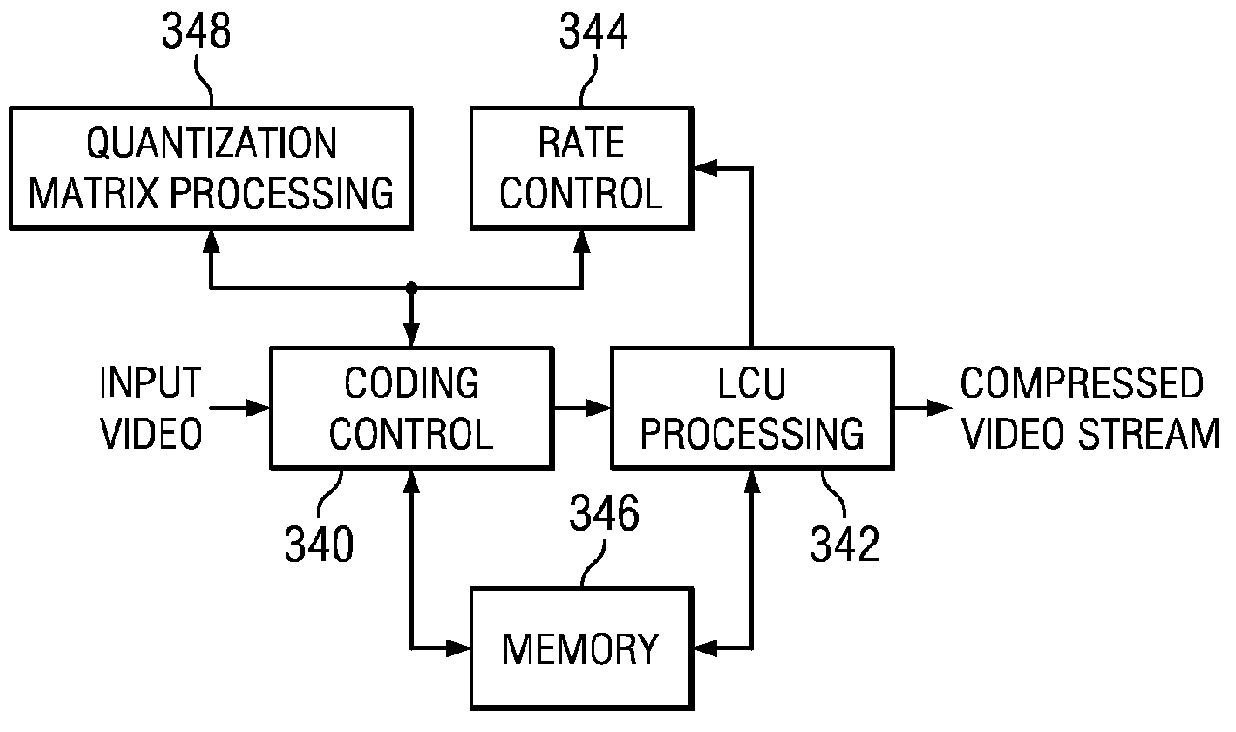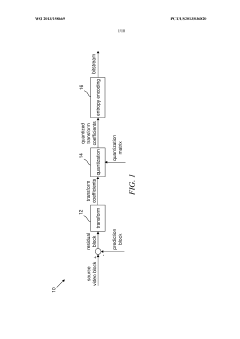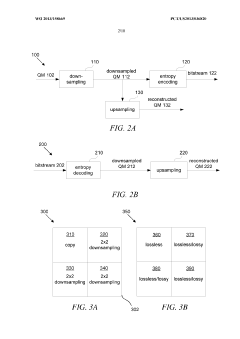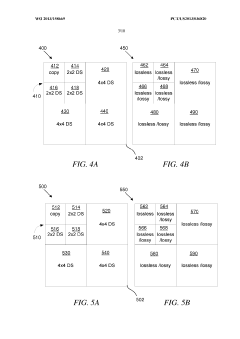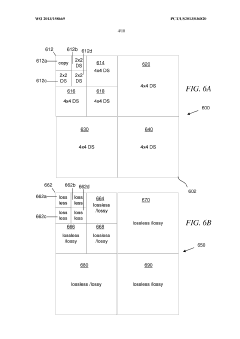Quantum Computing in Enhancing Video Compression Algorithms
JUL 17, 20259 MIN READ
Generate Your Research Report Instantly with AI Agent
Patsnap Eureka helps you evaluate technical feasibility & market potential.
Quantum Video Compression: Background and Objectives
Quantum video compression represents a groundbreaking intersection of quantum computing and video processing technologies. This emerging field aims to leverage the unique properties of quantum systems to enhance the efficiency and effectiveness of video compression algorithms. The development of quantum video compression techniques is driven by the exponential growth in video data generation and consumption, coupled with the increasing demand for higher quality video content.
The evolution of video compression technology has been marked by significant milestones, from early standards like H.261 to more recent ones such as H.265/HEVC and AV1. However, as we approach the theoretical limits of classical compression algorithms, quantum computing offers a promising avenue for further advancements. Quantum algorithms have the potential to exploit quantum superposition and entanglement to process vast amounts of data simultaneously, potentially leading to more efficient compression techniques.
The primary objective of quantum video compression research is to develop algorithms that can significantly outperform classical compression methods in terms of compression ratio, quality preservation, and computational efficiency. This involves exploring how quantum principles can be applied to various stages of the video compression pipeline, including motion estimation, transform coding, and entropy coding.
One of the key areas of focus is the development of quantum-inspired algorithms that can be implemented on near-term quantum devices, as well as fully quantum algorithms designed for future fault-tolerant quantum computers. These approaches aim to address the limitations of classical compression techniques, such as the trade-off between compression efficiency and computational complexity.
The potential impact of quantum video compression extends beyond just improving compression ratios. It could enable new applications in fields such as virtual reality, telemedicine, and autonomous vehicles, where high-quality, low-latency video transmission is crucial. Additionally, quantum video compression techniques may contribute to reducing the energy consumption associated with video processing and transmission, aligning with global efforts towards more sustainable computing practices.
As research in this field progresses, it is essential to consider the practical challenges of implementing quantum video compression algorithms. This includes addressing issues related to quantum error correction, scalability of quantum systems, and the integration of quantum processors with classical computing infrastructure. The ultimate goal is to develop quantum video compression solutions that can be seamlessly integrated into existing video processing workflows, providing tangible benefits to end-users across various industries.
The evolution of video compression technology has been marked by significant milestones, from early standards like H.261 to more recent ones such as H.265/HEVC and AV1. However, as we approach the theoretical limits of classical compression algorithms, quantum computing offers a promising avenue for further advancements. Quantum algorithms have the potential to exploit quantum superposition and entanglement to process vast amounts of data simultaneously, potentially leading to more efficient compression techniques.
The primary objective of quantum video compression research is to develop algorithms that can significantly outperform classical compression methods in terms of compression ratio, quality preservation, and computational efficiency. This involves exploring how quantum principles can be applied to various stages of the video compression pipeline, including motion estimation, transform coding, and entropy coding.
One of the key areas of focus is the development of quantum-inspired algorithms that can be implemented on near-term quantum devices, as well as fully quantum algorithms designed for future fault-tolerant quantum computers. These approaches aim to address the limitations of classical compression techniques, such as the trade-off between compression efficiency and computational complexity.
The potential impact of quantum video compression extends beyond just improving compression ratios. It could enable new applications in fields such as virtual reality, telemedicine, and autonomous vehicles, where high-quality, low-latency video transmission is crucial. Additionally, quantum video compression techniques may contribute to reducing the energy consumption associated with video processing and transmission, aligning with global efforts towards more sustainable computing practices.
As research in this field progresses, it is essential to consider the practical challenges of implementing quantum video compression algorithms. This includes addressing issues related to quantum error correction, scalability of quantum systems, and the integration of quantum processors with classical computing infrastructure. The ultimate goal is to develop quantum video compression solutions that can be seamlessly integrated into existing video processing workflows, providing tangible benefits to end-users across various industries.
Market Analysis for Quantum-Enhanced Video Compression
The market for quantum-enhanced video compression algorithms is poised for significant growth, driven by the increasing demand for high-quality video content and the limitations of classical compression techniques. As video streaming and digital media consumption continue to surge, the need for more efficient compression methods becomes paramount. Quantum computing offers a promising solution to this challenge, potentially revolutionizing the video compression landscape.
Current market trends indicate a growing interest in quantum-enhanced compression technologies across various sectors. The entertainment industry, particularly streaming platforms and content providers, stands to benefit greatly from improved compression algorithms. These advancements could lead to reduced bandwidth requirements, lower storage costs, and enhanced video quality, ultimately improving user experience and reducing operational expenses.
The telecommunications sector is another key market segment that could leverage quantum-enhanced video compression. With the rollout of 5G networks and the increasing prevalence of video-based communication, telecom companies are seeking ways to optimize data transmission and reduce network congestion. Quantum-enhanced compression algorithms could provide a competitive edge in this space, enabling more efficient use of network resources.
In the healthcare industry, there is a growing demand for high-quality medical imaging and telemedicine services. Quantum-enhanced video compression could facilitate the transmission and storage of large medical image datasets, improving diagnostic capabilities and enabling more effective remote healthcare delivery.
The potential market size for quantum-enhanced video compression is substantial. The global video streaming market, a primary beneficiary of this technology, is projected to experience robust growth in the coming years. Additionally, the broader quantum computing market is expected to expand significantly, with video compression applications representing a notable segment within this emerging field.
However, the market for quantum-enhanced video compression faces several challenges. The technology is still in its early stages, and practical implementations may take time to mature. There is also a need for specialized hardware and infrastructure to support quantum computing applications, which could limit initial adoption to larger enterprises and research institutions.
Despite these challenges, the potential benefits of quantum-enhanced video compression are driving investment and research in this area. Major technology companies, startups, and academic institutions are actively exploring quantum approaches to video compression, signaling a growing recognition of the technology's market potential.
As the technology progresses, we can expect to see early adopters in industries with high-value use cases, such as media and entertainment, healthcare, and telecommunications. The market is likely to evolve rapidly as quantum computing capabilities advance, potentially leading to new business models and service offerings centered around quantum-enhanced video compression.
Current market trends indicate a growing interest in quantum-enhanced compression technologies across various sectors. The entertainment industry, particularly streaming platforms and content providers, stands to benefit greatly from improved compression algorithms. These advancements could lead to reduced bandwidth requirements, lower storage costs, and enhanced video quality, ultimately improving user experience and reducing operational expenses.
The telecommunications sector is another key market segment that could leverage quantum-enhanced video compression. With the rollout of 5G networks and the increasing prevalence of video-based communication, telecom companies are seeking ways to optimize data transmission and reduce network congestion. Quantum-enhanced compression algorithms could provide a competitive edge in this space, enabling more efficient use of network resources.
In the healthcare industry, there is a growing demand for high-quality medical imaging and telemedicine services. Quantum-enhanced video compression could facilitate the transmission and storage of large medical image datasets, improving diagnostic capabilities and enabling more effective remote healthcare delivery.
The potential market size for quantum-enhanced video compression is substantial. The global video streaming market, a primary beneficiary of this technology, is projected to experience robust growth in the coming years. Additionally, the broader quantum computing market is expected to expand significantly, with video compression applications representing a notable segment within this emerging field.
However, the market for quantum-enhanced video compression faces several challenges. The technology is still in its early stages, and practical implementations may take time to mature. There is also a need for specialized hardware and infrastructure to support quantum computing applications, which could limit initial adoption to larger enterprises and research institutions.
Despite these challenges, the potential benefits of quantum-enhanced video compression are driving investment and research in this area. Major technology companies, startups, and academic institutions are actively exploring quantum approaches to video compression, signaling a growing recognition of the technology's market potential.
As the technology progresses, we can expect to see early adopters in industries with high-value use cases, such as media and entertainment, healthcare, and telecommunications. The market is likely to evolve rapidly as quantum computing capabilities advance, potentially leading to new business models and service offerings centered around quantum-enhanced video compression.
Current Challenges in Quantum Video Compression
Quantum video compression faces several significant challenges that hinder its widespread adoption and practical implementation. One of the primary obstacles is the limited availability of quantum hardware capable of executing complex compression algorithms. Current quantum computers lack the necessary qubit count and coherence times to process large-scale video data effectively.
Another major challenge lies in the development of quantum algorithms specifically tailored for video compression. While quantum computing shows promise in certain computational tasks, translating classical video compression techniques into quantum counterparts is not straightforward. Researchers are still exploring ways to leverage quantum superposition and entanglement to achieve superior compression ratios without compromising video quality.
The integration of quantum and classical systems poses another hurdle. Efficient interfaces between quantum processors and classical storage and transmission systems are crucial for seamless video processing. However, the current quantum-classical hybrid systems suffer from bottlenecks in data transfer and conversion, limiting the overall performance of quantum video compression pipelines.
Error correction and noise mitigation remain critical challenges in quantum computing, particularly for video compression applications. Quantum states are highly susceptible to environmental disturbances, leading to errors in computation. Developing robust error correction codes and noise-resilient algorithms specific to video compression is essential for achieving reliable and consistent results.
The computational complexity of quantum video compression algorithms presents another significant challenge. Many proposed quantum algorithms for compression tasks exhibit exponential speedup in theory but face practical limitations in implementation due to the current state of quantum hardware. Balancing the trade-off between compression efficiency and computational feasibility is an ongoing research focus.
Furthermore, the lack of standardization in quantum video compression techniques hampers interoperability and widespread adoption. Unlike classical video compression standards (e.g., H.264, HEVC), quantum approaches are still in their infancy, with various competing methods and no established industry standards.
Lastly, the energy efficiency of quantum systems for video compression remains a concern. While quantum computing promises potential energy savings in certain computations, the cooling requirements and operational costs of current quantum hardware may offset these benefits, particularly for large-scale video processing tasks.
Another major challenge lies in the development of quantum algorithms specifically tailored for video compression. While quantum computing shows promise in certain computational tasks, translating classical video compression techniques into quantum counterparts is not straightforward. Researchers are still exploring ways to leverage quantum superposition and entanglement to achieve superior compression ratios without compromising video quality.
The integration of quantum and classical systems poses another hurdle. Efficient interfaces between quantum processors and classical storage and transmission systems are crucial for seamless video processing. However, the current quantum-classical hybrid systems suffer from bottlenecks in data transfer and conversion, limiting the overall performance of quantum video compression pipelines.
Error correction and noise mitigation remain critical challenges in quantum computing, particularly for video compression applications. Quantum states are highly susceptible to environmental disturbances, leading to errors in computation. Developing robust error correction codes and noise-resilient algorithms specific to video compression is essential for achieving reliable and consistent results.
The computational complexity of quantum video compression algorithms presents another significant challenge. Many proposed quantum algorithms for compression tasks exhibit exponential speedup in theory but face practical limitations in implementation due to the current state of quantum hardware. Balancing the trade-off between compression efficiency and computational feasibility is an ongoing research focus.
Furthermore, the lack of standardization in quantum video compression techniques hampers interoperability and widespread adoption. Unlike classical video compression standards (e.g., H.264, HEVC), quantum approaches are still in their infancy, with various competing methods and no established industry standards.
Lastly, the energy efficiency of quantum systems for video compression remains a concern. While quantum computing promises potential energy savings in certain computations, the cooling requirements and operational costs of current quantum hardware may offset these benefits, particularly for large-scale video processing tasks.
Existing Quantum-Inspired Video Compression Techniques
01 Advanced encoding techniques
Various advanced encoding techniques are employed to improve video compression efficiency. These include methods like inter-frame prediction, motion estimation, and transform coding. By utilizing these techniques, video compression algorithms can significantly reduce the amount of data required to represent video content while maintaining acceptable quality.- Advanced encoding techniques: Various advanced encoding techniques are employed to improve video compression efficiency. These include methods like inter-frame prediction, motion estimation, and transform coding. By utilizing these techniques, video compression algorithms can significantly reduce the amount of data required to represent video content while maintaining acceptable quality.
- Adaptive bitrate encoding: Adaptive bitrate encoding adjusts the compression parameters based on the content complexity and available bandwidth. This approach allows for optimal allocation of bits to different parts of the video, resulting in improved overall compression efficiency and better video quality across varying network conditions.
- Machine learning-based compression: Machine learning algorithms are increasingly being used to enhance video compression efficiency. These techniques can learn from large datasets to optimize compression parameters, predict frame content, and make intelligent decisions about encoding strategies, leading to improved compression ratios and visual quality.
- Perceptual coding optimization: Perceptual coding techniques focus on optimizing compression based on human visual perception. By prioritizing the preservation of visually important information and discarding less noticeable details, these methods can achieve higher compression efficiency without significantly impacting perceived video quality.
- Parallel processing for compression: Leveraging parallel processing capabilities of modern hardware, video compression algorithms can distribute encoding tasks across multiple cores or processors. This approach allows for faster encoding times and the ability to implement more complex compression techniques, ultimately leading to improved compression efficiency.
02 Adaptive bitrate encoding
Adaptive bitrate encoding adjusts the compression parameters based on the content complexity and available bandwidth. This approach allows for optimal compression efficiency by allocating more bits to complex scenes and fewer bits to simpler scenes, resulting in improved overall video quality and reduced file size.Expand Specific Solutions03 Machine learning-based compression
Machine learning algorithms are increasingly being used to enhance video compression efficiency. These algorithms can analyze video content, predict optimal compression parameters, and even generate more efficient compression models. This approach leads to improved compression ratios and better visual quality compared to traditional methods.Expand Specific Solutions04 Perceptual coding techniques
Perceptual coding techniques exploit the characteristics of human visual perception to achieve higher compression efficiency. By focusing on preserving details that are more noticeable to the human eye and discarding less perceptible information, these methods can achieve significant compression without sacrificing perceived video quality.Expand Specific Solutions05 Parallel processing for compression
Utilizing parallel processing techniques can significantly improve the speed and efficiency of video compression algorithms. By distributing the compression workload across multiple processors or cores, these methods can achieve faster encoding times and potentially higher compression ratios, especially for high-resolution video content.Expand Specific Solutions
Key Players in Quantum Computing and Video Compression
The quantum computing market for enhancing video compression algorithms is in its early stages, with significant potential for growth. The technology's application in this field is still emerging, with a market size expected to expand rapidly as quantum computing capabilities advance. Major players like Intel, Microsoft, and IBM are investing heavily in quantum research, while companies such as Qualcomm and Apple are exploring its potential for video compression. The technology's maturity varies, with established tech giants like Intel and Microsoft leading in quantum computing development, while specialized firms like InterDigital and DigitalInsights focus on applying quantum principles to video compression. As the field progresses, collaboration between quantum computing experts and video compression specialists is likely to accelerate innovation and market growth.
Intel Corp.
Technical Solution: Intel is exploring quantum computing applications in video compression through its Quantum Computing Research Program. They are developing quantum algorithms that could potentially enhance traditional compression techniques. Intel's approach involves using quantum circuits to perform complex calculations for video encoding, potentially reducing computational complexity and improving compression ratios. Their quantum-inspired algorithms have shown promise in optimizing certain aspects of video compression, such as motion estimation and transform coding[1][3]. Intel is also investigating the use of quantum annealing for solving optimization problems in video compression, which could lead to more efficient encoding strategies.
Strengths: Strong R&D capabilities, existing expertise in classical computing. Weaknesses: Quantum hardware still in early stages, integration challenges with existing systems.
Microsoft Technology Licensing LLC
Technical Solution: Microsoft is leveraging its Azure Quantum platform to explore quantum-enhanced video compression algorithms. They are developing hybrid quantum-classical approaches that aim to improve specific components of video compression pipelines. Microsoft's research focuses on using quantum algorithms for tasks such as frame prediction and residual coding. Their quantum-inspired optimization techniques have shown potential in reducing the computational complexity of certain compression tasks[2][4]. Additionally, Microsoft is investigating the use of quantum machine learning algorithms to enhance adaptive compression techniques, potentially leading to more efficient and context-aware video compression methods.
Strengths: Robust cloud infrastructure, advanced quantum software development tools. Weaknesses: Limited quantum hardware capabilities compared to some competitors.
Core Quantum Algorithms for Video Compression
Quantization Matrix Compression in Video Coding
PatentActiveUS20120140815A1
Innovation
- The method involves preprocessing quantization matrices through down-sampling and symmetry processing, followed by zigzag scanning, prediction, and kth order exp-Golomb coding to compress them, allowing for efficient compression and decompression, including up-sampling smaller matrices to derive larger ones, thereby reducing bit rate requirements.
Method and apparatus of quantization matrix coding
PatentWO2013158669A1
Innovation
- A non-uniform downsampling scheme is employed to reduce the number of quantization coefficients by copying low-frequency components and downsampling high-frequency components using various filter sizes, followed by lossy coding and upsampling algorithms to reconstruct the QM, thereby reducing bitstream size and reconstruction errors.
Quantum Hardware Requirements for Video Processing
The implementation of quantum computing in video compression algorithms necessitates specific hardware requirements to effectively process and manipulate quantum states. Quantum processors, the core components of quantum computers, must possess sufficient qubit capacity to handle the complex calculations involved in video processing. Current estimates suggest that a minimum of 50-100 qubits would be required for basic video compression tasks, with more advanced applications potentially requiring thousands of qubits.
Quantum error correction is crucial for maintaining the stability of quantum states during video processing. This demands additional physical qubits to create logical qubits, significantly increasing the overall qubit count. Specialized quantum memory units are also essential for storing quantum states between processing steps, requiring high coherence times to preserve quantum information.
The quantum hardware must support fast gate operations to execute quantum algorithms efficiently. Gate fidelity, which measures the accuracy of quantum operations, should ideally exceed 99.9% to minimize errors in video processing tasks. Quantum interconnects are necessary to facilitate communication between different parts of the quantum system, enabling seamless data transfer and processing.
Quantum-classical hybrid systems play a vital role in video processing applications. These systems integrate quantum processors with classical computers, allowing for efficient pre-processing and post-processing of video data. The interface between quantum and classical components must be optimized to minimize latency and ensure smooth data flow.
Cooling systems are critical for maintaining quantum hardware at extremely low temperatures, typically near absolute zero. This is essential for reducing thermal noise and preserving quantum coherence. Cryogenic equipment capable of achieving and sustaining temperatures below 1 Kelvin is necessary for most quantum computing architectures used in video processing.
Quantum control systems, including precise microwave and laser sources, are required for manipulating qubits and executing quantum gates. These systems must be highly accurate and stable to ensure reliable quantum operations during video compression tasks. Additionally, advanced measurement devices are needed to read out qubit states accurately and quickly, enabling real-time feedback and error correction in video processing algorithms.
Quantum error correction is crucial for maintaining the stability of quantum states during video processing. This demands additional physical qubits to create logical qubits, significantly increasing the overall qubit count. Specialized quantum memory units are also essential for storing quantum states between processing steps, requiring high coherence times to preserve quantum information.
The quantum hardware must support fast gate operations to execute quantum algorithms efficiently. Gate fidelity, which measures the accuracy of quantum operations, should ideally exceed 99.9% to minimize errors in video processing tasks. Quantum interconnects are necessary to facilitate communication between different parts of the quantum system, enabling seamless data transfer and processing.
Quantum-classical hybrid systems play a vital role in video processing applications. These systems integrate quantum processors with classical computers, allowing for efficient pre-processing and post-processing of video data. The interface between quantum and classical components must be optimized to minimize latency and ensure smooth data flow.
Cooling systems are critical for maintaining quantum hardware at extremely low temperatures, typically near absolute zero. This is essential for reducing thermal noise and preserving quantum coherence. Cryogenic equipment capable of achieving and sustaining temperatures below 1 Kelvin is necessary for most quantum computing architectures used in video processing.
Quantum control systems, including precise microwave and laser sources, are required for manipulating qubits and executing quantum gates. These systems must be highly accurate and stable to ensure reliable quantum operations during video compression tasks. Additionally, advanced measurement devices are needed to read out qubit states accurately and quickly, enabling real-time feedback and error correction in video processing algorithms.
Ethical Implications of Quantum-Enhanced Video Compression
The integration of quantum computing into video compression algorithms raises significant ethical considerations that must be carefully examined. As this technology advances, it has the potential to revolutionize data storage and transmission, but it also introduces new challenges in privacy, security, and social equity.
One of the primary ethical concerns is the potential for quantum-enhanced compression to exacerbate existing digital divides. While improved compression algorithms could lead to more efficient data transmission and storage, the advanced nature of quantum computing may limit access to these benefits. Organizations and individuals with the resources to leverage quantum technologies may gain a significant advantage, potentially widening the gap between technological haves and have-nots.
Privacy and data security present another critical ethical dimension. Quantum-enhanced compression could potentially allow for the storage and transmission of vastly larger amounts of personal data. This capability raises questions about data ownership, consent, and the potential for misuse. There is a risk that enhanced compression could facilitate more extensive surveillance and data collection practices, potentially infringing on individual privacy rights.
The environmental impact of quantum computing in video compression also warrants ethical consideration. While improved compression could reduce the energy required for data storage and transmission, the energy demands of quantum computers themselves may offset these gains. Balancing the potential benefits of quantum-enhanced compression against its environmental costs is a complex ethical challenge that requires careful analysis.
Another ethical implication relates to the authenticity and integrity of compressed video content. Quantum algorithms might enable more sophisticated manipulation of video data, potentially blurring the line between authentic and altered content. This capability could have far-reaching consequences for fields such as journalism, law enforcement, and entertainment, where the veracity of video evidence is crucial.
The potential for quantum-enhanced compression to impact employment in industries related to data storage and transmission also raises ethical questions. While technological advancements often lead to job displacement, the rapid and transformative nature of quantum computing may accelerate this process, necessitating careful consideration of the societal impacts and the need for proactive measures to support affected workers.
Lastly, the dual-use nature of quantum-enhanced compression technology presents ethical dilemmas. While it offers numerous beneficial applications, it could also be leveraged for malicious purposes, such as more efficient distribution of illegal content or enhanced encryption of criminal communications. Striking a balance between technological progress and responsible use is a critical ethical challenge in this domain.
One of the primary ethical concerns is the potential for quantum-enhanced compression to exacerbate existing digital divides. While improved compression algorithms could lead to more efficient data transmission and storage, the advanced nature of quantum computing may limit access to these benefits. Organizations and individuals with the resources to leverage quantum technologies may gain a significant advantage, potentially widening the gap between technological haves and have-nots.
Privacy and data security present another critical ethical dimension. Quantum-enhanced compression could potentially allow for the storage and transmission of vastly larger amounts of personal data. This capability raises questions about data ownership, consent, and the potential for misuse. There is a risk that enhanced compression could facilitate more extensive surveillance and data collection practices, potentially infringing on individual privacy rights.
The environmental impact of quantum computing in video compression also warrants ethical consideration. While improved compression could reduce the energy required for data storage and transmission, the energy demands of quantum computers themselves may offset these gains. Balancing the potential benefits of quantum-enhanced compression against its environmental costs is a complex ethical challenge that requires careful analysis.
Another ethical implication relates to the authenticity and integrity of compressed video content. Quantum algorithms might enable more sophisticated manipulation of video data, potentially blurring the line between authentic and altered content. This capability could have far-reaching consequences for fields such as journalism, law enforcement, and entertainment, where the veracity of video evidence is crucial.
The potential for quantum-enhanced compression to impact employment in industries related to data storage and transmission also raises ethical questions. While technological advancements often lead to job displacement, the rapid and transformative nature of quantum computing may accelerate this process, necessitating careful consideration of the societal impacts and the need for proactive measures to support affected workers.
Lastly, the dual-use nature of quantum-enhanced compression technology presents ethical dilemmas. While it offers numerous beneficial applications, it could also be leveraged for malicious purposes, such as more efficient distribution of illegal content or enhanced encryption of criminal communications. Striking a balance between technological progress and responsible use is a critical ethical challenge in this domain.
Unlock deeper insights with Patsnap Eureka Quick Research — get a full tech report to explore trends and direct your research. Try now!
Generate Your Research Report Instantly with AI Agent
Supercharge your innovation with Patsnap Eureka AI Agent Platform!

